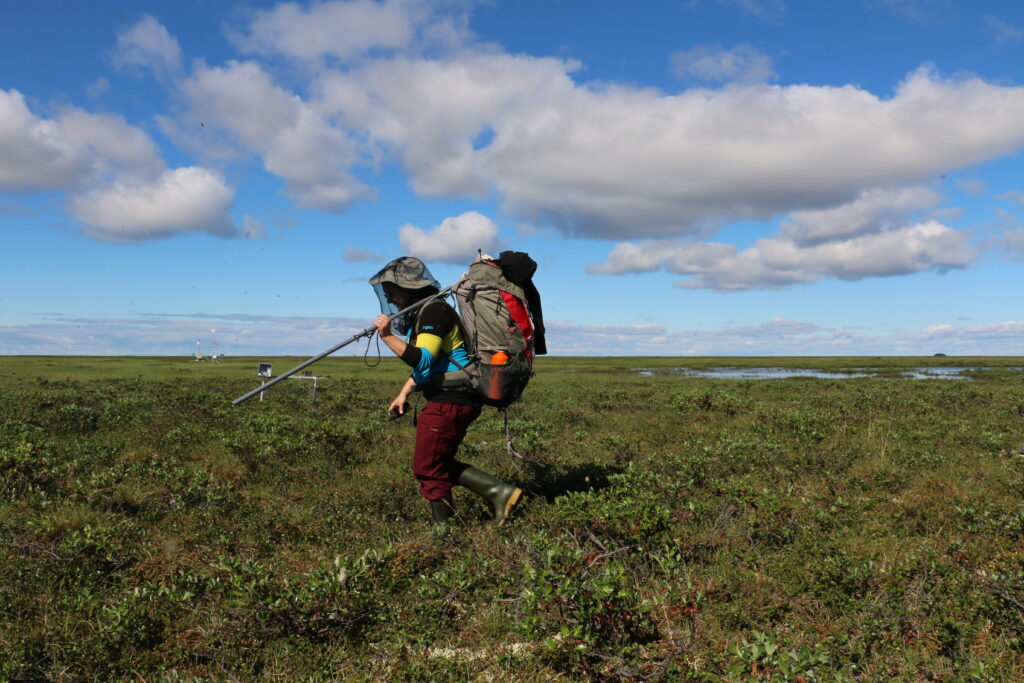Sampling day 1: “After spending the first week selecting 20 ponds, I am ready for the main work of my field campaign: the sampling of all these ponds. I am collecting filtered water to analyse its carbon content, and filters to analyse which bacteria live in these ponds. Today is a windy day so we are not annoyed by mosquitos on the way. The ponds are located 2.5 km from the camp, not far you may say, but as walking in the tundra is an everyday challenge, we need 45 minutes to 1 hour to reach them. I am organizing a “field laboratory” on a towel and start to filter the water. I flame the forceps to collect the filter, I open the filtration tower to collect the filter, I catch the filter with the forceps and… the wind blows my filter away. I need to start all over again.”

Sampling day 2: “Today is a sunny, windless day! Hurrah my filters will not be blown away. However, we need protection against mosquitos: the hat, the net, the trousers and the mosquito-proof shirt. I install the filtration tower, the filter, pour water and start to pump. I flame the forceps, open the tower, collect the filter and… in a fraction of second already four mosquitos landed on my filters! Why is that a problem? Because I will extract DNA from these filters and I am more interested in aquatic bacteria rather than on the bacteria presents on mosquitos’ legs! I am laughing, every simple laboratory operation becomes a hard task involving attention.”
Alizée Le Moigne is a PhD student at University of Zurich. This field note relates to her field trip to north-eastern Siberia during the summer 2018 funded by a Polar Access Fund grant.
Header photograph: © Alizée Le Moigne, all rights reserved
© All rights reserved, Alizée le Moigne 2025